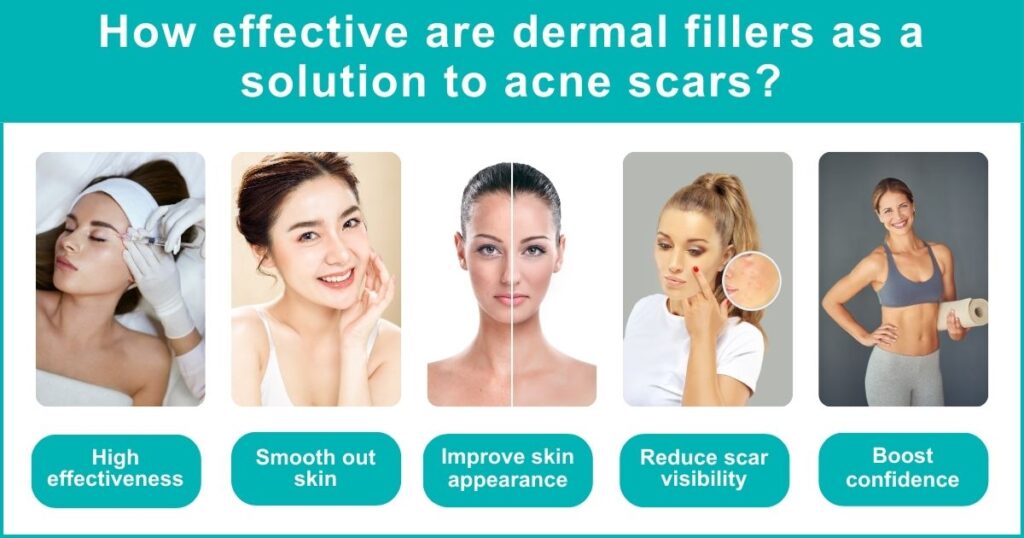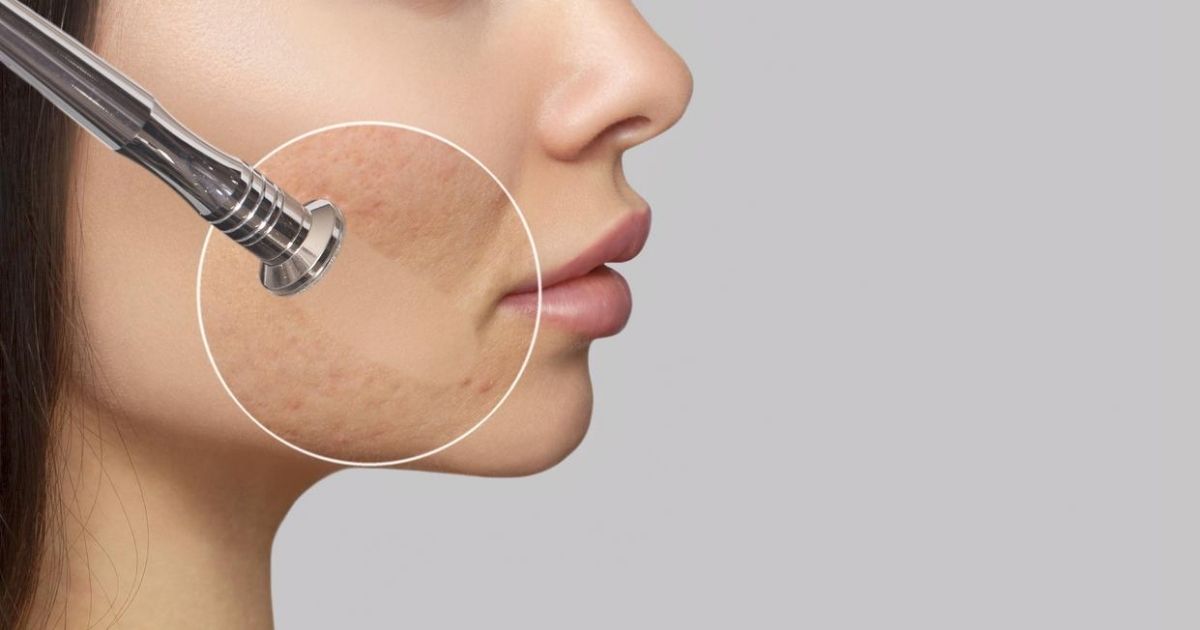If you’re seeking a solution to combat acne scars effectively, look no further than the remarkable potential of dermal fillers. With their transformative capabilities, dermal fillers offer a promising option for restoring smooth and flawless skin.
By precisely targeting and filling depressed acne scars, these fillers can significantly improve the appearance of your complexion, granting you newfound confidence and radiance. Discover the transformative power of dermal fillers for acne scars and unlock a renewed sense of self-assurance.
How effective are dermal fillers as a solution to acne scars?

Dermal fillers are like a helping hand for your skin. They work very well to improve the look of acne scars by filling them in. Just like when you fill in a hole in the ground, dermal fillers work to smooth out your skin.
A Breast Augmentation Specialist is a doctor who helps women change the size or shape of their breasts. they do this through surgeries like breast augmentation or reduction.
Book A Consultation With Dr Tarek Bayazid
Top-rated Plastic Surgeon For Breast Augmentation in Dubai
Installment Plan Available
What types of acne scars are most responsive to dermal fillers?
Not all acne scars are the same. Some are deeper and harder than others. Dermal fillers work best on softer, shallower scars, also known as “rolling scars”, and less well on deep, narrow ones, called “ice pick” scars.
| Type of Acne Scar | Description | Responsiveness to Dermal Fillers |
| Rolling Scars | Small, indented scars that look like rolling hills. | Most responsive to dermal fillers. |
| Ice Pick Scars | Deep, narrow scars that look like ice picks. | Less responsive to dermal fillers, but can still be improved. |
| Boxcar Scars | Flat, indented scars that have a squared-off appearance. | Less responsive to dermal fillers, but can still be improved. |
How does the procedure of applying dermal fillers to treat acne scars work?
Think of dermal fillers as a special jelly that doctors use to fill in your scars. A doctor or nurse will use a tiny needle to inject this jelly into your acne scars. This helps raise the scar so it’s level with the rest of your skin, making it less noticeable.
See related: Filler for nose, best rhinoplasty alternatives.
| Step | Description |
| Consultation | The doctor will assess acne scars and discuss the best course of action. They will also answer any questions you may have. |
| Preparation | The skin will be cleansed and numbed with a local anaesthetic. |
| Injection | The dermal filler will be injected into the scars. The doctor will use an excellent needle to minimise pain and discomfort. |
| Aftercare | You may experience some bruising and swelling. The symptoms should subside within a few days. |
| Results | The results of the procedure will be visible immediately. The body will gradually absorb the filler over time, so the results will not be permanent. |
Can dermal fillers cause side effects when used to treat acne scars?
Using dermal fillers is generally safe, but there can be side effects like redness, swelling, or pain where the filler was injected. After a few days, these usually disappear. Bumping under the skin is also possible, but this is rare.
The recovery process for dermal fillers for acne scars
After having dermal fillers, you might notice some redness or swelling. The symptoms should subside within a few days. It’s important to avoid touching or rubbing the area; staying out of the sun is also beneficial. Generally, people return to their normal activities quickly after this treatment.
| Stage | Description |
| Immediately after the procedure | The injection site may appear red, swollen, or bruised. The symptoms should disappear within a few days. |
| 1-2 days after the procedure | The bruising and swelling should start to subside. You may still feel some tenderness at the injection site. |
| 1-2 weeks after the procedure | The bruising and swelling should be gone. Your normal activities should be resumed soon. |
| 1-3 months after the procedure | The filler will start to settle into place. The full results of the procedure will be displayed at this point. |
How long do the effects of dermal fillers last when used to treat acne scars?
Dermal fillers aren’t a permanent fix. It varies from person to person how long they last. Some people see results after around six months; others after a year. If you wish, you can have the treatment again when the effects wear off. Dubai’s Ultimate Cosmetic Clinic is a place where people go to improve their appearance with different beauty treatments. It’s like a special doctor’s office in Dubai that makes you look even better! Breast augmentation 300cc enhancement is a surgery to make breasts bigger by adding 300cc of implants to each breast making them look fuller and rounder
Breast implants waviness can happen when the implant moves or shifts under the skin making the breast look uneven or rippled this effect is more noticeable in women with thin skin or little natural breast tissue
What differentiates dermal fillers from other treatments for acne scars?
A benefit of dermal fillers is that they lift scars to the skin’s level, unlike creams and lotions, which only work on the surface. Also, the results can be seen quickly, often immediately after the treatment. It’s also a non-surgical procedure, meaning cuts or stitches are unnecessary.
Dermal fillers for acne scars present a promising solution to a prevalent issue. They have shown high effectiveness in reducing the appearance of scars, especially rolling scars, giving people a newfound sense of confidence.
However, as with any medical procedure, it’s essential to consult a qualified professional before starting treatment. Understanding the procedure, its costs, potential side effects, and the recovery process are necessary to achieve smoother, healthier-looking skin.
Ready to say goodbye to acne scars? Your journey to smoother, healthier skin starts with a single step. Book a consultation with Dr Tarek today, and let’s explore how dermal fillers for acne scars can help boost your confidence. Don’t wait. Start your journey towards a more radiant you today!









